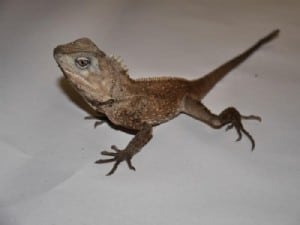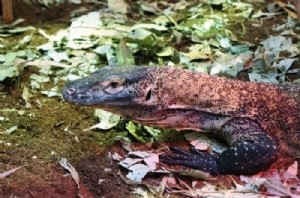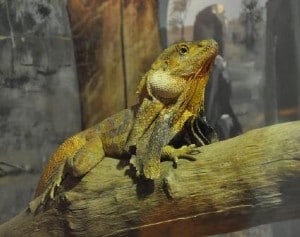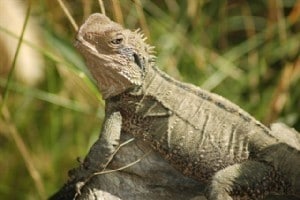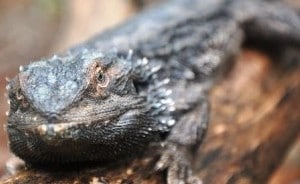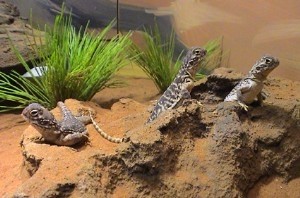-
Southern Forest Dragon
Scientific Name: Hypsilurus spinipes A superb master of camouflage, the southern forest dragon’s imposing appearance belies its placid nature and inactive lifestyle. Ranging from a mossy greenish-grey to mid-brown in colour, they are characterized by a raised flap of skin adorned with spines on the neck which merges into a
Komodo Dragon
Scientific Name: (Varanus komodoensis) Komodo dragons are the world’s largest lizard, with males growing up to 3 metres long and sometimes reaching over 100kg! They have large, streamlined bodies with a strong tail and powerful, bowed limbs. They have long, flat heads with rounded snouts and mottled black/brown scale colour
Frilled Neck Lizard
Scientific Name: Chlamydosaurus kingii The frilled lizard grows to around 45-90cm in length, about two-thirds of which is tail. It has a vivid yellow mouth and a large extendible frill gathered about the neck and under throat. The combination of the gaping mouth and the wide, brightly coloured frill provide
Eastern Water Dragon
Scientific Name: Physignathus lesueurii The eastern water dragon grows to around 80-90cm in length, much of which is tail The colour consists of shades of grey or brown with a series of black bands on the back and tail and a black stripe on the side of the head behind
Eastern Bearded Dragon
Scientific Name: Pogona barbata The harsh, spiky appearance of these lizards belie their normally placid temperament. If approached in the wild, the bearded dragon’s usual response is to freeze and rely on its camouflage. If further threatened they puff themselves up, extend the ‘beard’ under the throat and open the
Central Netted Dragon
Scientific Name: Ctenophorus nuchalis A small active dragon with an intricate reticulated or netlike pattern of dark lines over a pale grey-brown background. The head is rounded and the legs and toes are strong to enable them to run at great speeds and to dig burrows. The tail of an

